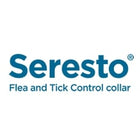
Food allergies in dogs are more common than many pet owners realize. While occasional itching or an upset stomach might seem harmless, they could be early signs of a more serious underlying issue—an allergy to something in your dog's diet.
In this guide, we'll help you understand how to identify dog food allergies, what causes them, and how to manage them effectively. If your furry friend has been showing unusual symptoms, this blog could be your first step toward relief and better health.
What Are Dog Food Allergies?
Dog food allergies occur when your dog’s immune system mistakenly identifies a particular ingredient in food as a threat. The immune response that follows causes symptoms ranging from mild itching to severe digestive issues.
It’s important to distinguish between a food intolerance and a food allergy. Allergies trigger a response from the immune system, whereas intolerances do not involve immune activity. While both can cause your dog discomfort, untreated allergies may escalate into more serious health issues over time.
Common Signs of Dog Food Allergies
Food allergy symptoms can differ greatly among dogs, but some of the most frequently observed signs are:
- Itchy skin, especially around the ears, face, paws, or belly
- Chronic ear infections or frequent head-shaking
- Hair loss or a dull coat
- Excessive licking or chewing of paws
- Gastrointestinal issues like vomiting, diarrhea, or frequent gas
- Red or inflamed skin
- Scooting due to anal gland irritation
If your dog shows any of these signs—particularly if they continue or become more severe—it’s essential to seek advice from your veterinarian.
What Causes Food Allergies in Dogs?
A specific protein or carbohydrate typically triggers dog food allergies. Some of the most common allergens include:
- Beef
- Chicken
- Lamb
- Dairy
- Wheat
- Soy
- Eggs
- Corn
While these ingredients are found in many commercial dog foods, not all dogs will react to them. Food allergies often emerge gradually due to continuous exposure to the same ingredients in your dog’s diet.
How to Identify a Food Allergy
Identifying a food allergy in dogs involves a careful, step-by-step process to pinpoint the exact cause. Here’s how most veterinarians recommend doing it:
1. Elimination Diet Trial
An elimination diet involves feeding your dog a limited-ingredient diet or a novel protein (something they’ve never eaten before, like venison or duck) for 8–12 weeks. No treats, flavored medications, or table scraps should be given during this period.
If the symptoms improve, it indicates that something in the previous diet was causing the reaction.
2. Food Challenge
After the elimination phase, your vet may recommend reintroducing one ingredient at a time from your dog's old diet. If symptoms return, the culprit is likely identified.
This process requires patience but is the most reliable way to diagnose a food allergy.
What to Do If Your Dog Has a Food Allergy
Once the allergen is identified, the solution is to avoid it completely. Here are some practical tips:
Switch to hypoallergenic or limited-ingredient dog food.
Look for labels that clearly state the protein and carb sources, and avoid anything your dog has reacted to in the past.
Prepare homemade meals (under vet supervision).
This gives you complete control over the ingredients in your dog’s diet.
Read labels carefully.
Even small traces of allergens in treats or chews can trigger symptoms.
Consider hydrolyzed protein diets.
These are specially processed so the immune system doesn't recognize the proteins, making allergic reactions less likely.
When to See a Vet
Always consult your vet before changing your dog’s diet or starting an elimination trial. Food allergies can sometimes mimic other conditions, such as environmental allergies, skin infections, or parasites.
A vet can help rule out other issues and help you navigate the correct diagnosis steps and create an effective treatment plan.
Final Thoughts
Dog food allergies can be frustrating, but with careful observation and the proper diet, your dog can live a healthy, symptom-free life. Always monitor your dog’s reaction to new foods and be proactive about seeking help when something feels off.
By being informed and vigilant, you're taking an important step toward your pet’s long-term well-being.






